10 Spicy Secrets of Southern African Dishes: A Flavor-Packed Journey Through Tradition!
Welcome, spice adventurers! If you’ve ever dreamed of what it would be like to taste the soul of a continent through its food, you're in for a wild ride. Today, we're diving headfirst into the rich, vibrant, and flavor-packed world of southern African dishes — where every bite tells a story and every spice whispers an ancestral secret.
From the smoky braais of South Africa to the fiery curries of Zimbabwe, southern African cuisine is a treasure trove of spices, traditions, and community. And guess what? You don’t need a passport to experience it — just a well-stocked spice rack and a curious palate!
Table of Contents
- The Spice Rack of Southern Africa: What’s Essential?
- Top 5 Must-Try Southern African Dishes (and Why They’re Hot)
- Spice Tips & Tricks: How to Master Southern African Flavors at Home
- From Farm to Flame: The Cultural Roots of These Dishes
- Drink & Dessert Pairings That’ll Make Your Taste Buds Dance
- Summary & Final Thoughts
🔥 The Spice Rack of Southern Africa: What’s Essential?
Before we dive into specific dishes, let’s talk about the holy grail — the spices that define this region. Southern African cuisine isn't always about heat; it's more about harmony, earthiness, and layers of aroma. Here are the must-have spices:
| Spice | Flavor Profile | Common Uses | Dish Example |
|---|---|---|---|
| Paprika | Sweet, smoky, slightly peppery | Braising meats, rubs, stews | Bobotie seasoning |
| Coriander Seeds | Citrusy, warm, earthy | Curries, meat marinades, spice blends | Zimbabwean game stew |
| Cumin | Nutty, spicy, warm | Ground into curry powders or dry rubs | Karoo lamb dishes |
| Fenugreek | Bitter-sweet, maple-like undertone | In mild curries and pickling spices | Malva pudding (surprise inclusion!) |
| Mace | Mildly peppery, similar to nutmeg but softer | Used in slow-cooked meat dishes and soups | Oxtail stew |
Pro tip: Toast your whole spices before grinding — this unlocks deeper flavors and makes your kitchen smell like a Cape Town spice market on a Saturday morning.
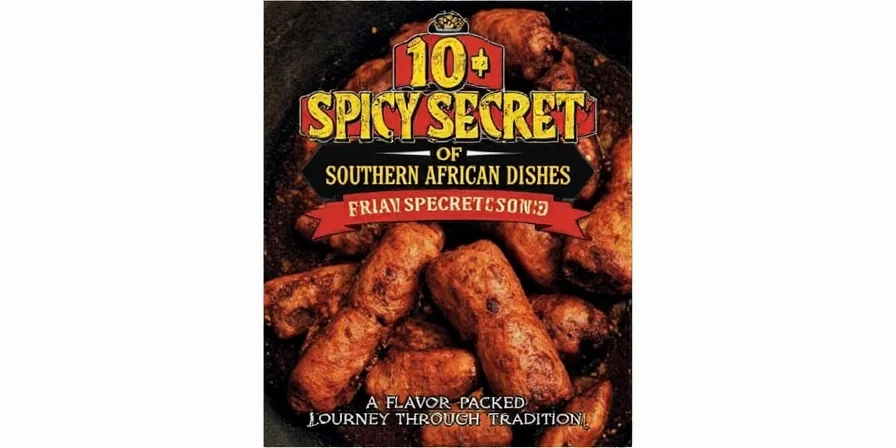
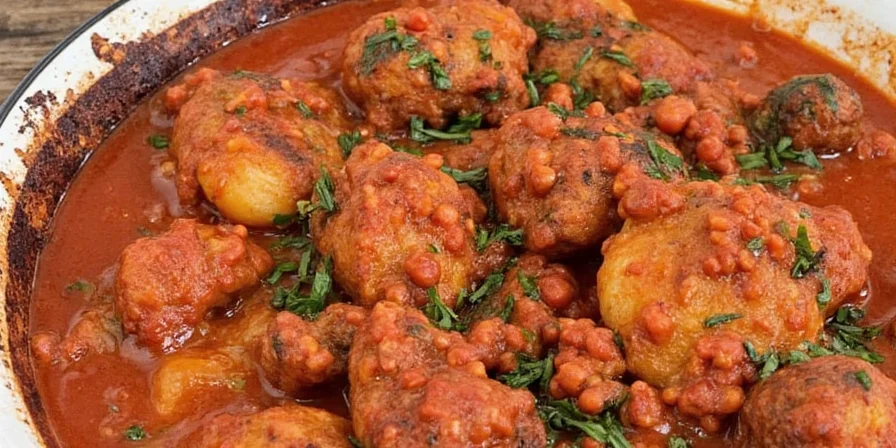
🍛 Top 5 Must-Try Southern African Dishes (and Why They’re Hot)
Now that we’ve got our spice arsenal ready, let’s explore five iconic dishes that scream Southern Africa. Each one is a love letter to the land, fire, and people who make it happen.
1. Bobotie
- Origin: South Africa
- Main Ingredients: Ground meat (usually beef), spices (curry powder, turmeric), milk-soaked bread, egg topping
- Why It’s Special: A fusion of Dutch and Malay influences — think of it as South Africa’s version of shepherd’s pie meets curry.
- Spice Level: Mild-to-medium, depending on the curry blend used
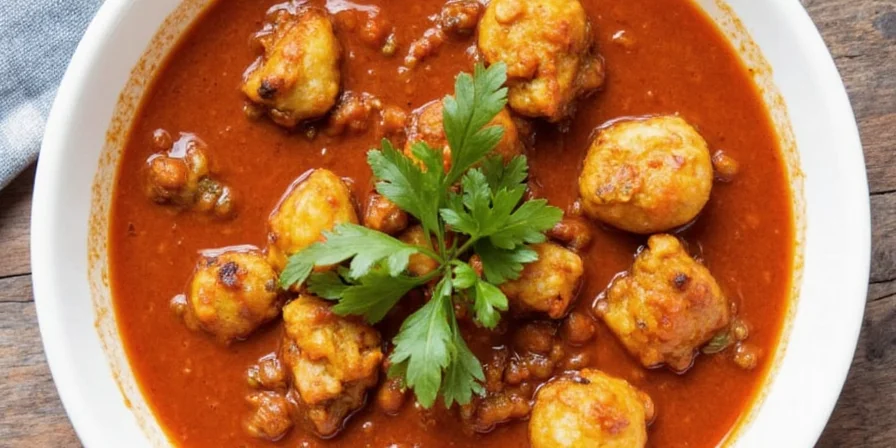
2. Sadza (with Relish)
- Origin: Zimbabwe
- Main Ingredients: Cornmeal porridge, relish (meat, greens, beans)
- Why It’s Special: It’s the heart of every Zimbabwean meal — hearty, humble, and deeply nourishing.
- Spice Level: Varies by relish — from mild greens to spiced game meat

3. Bunny Chow
- Origin: South Africa (Indian-South African fusion)
- Main Ingredients: Hollowed-out loaf of bread filled with spicy curry (chicken, beans, or mutton)
- Why It’s Special: A delicious example of how Indian immigrants shaped South African cuisine.
- Spice Level: Medium to hot — bring a napkin and maybe a cold drink!
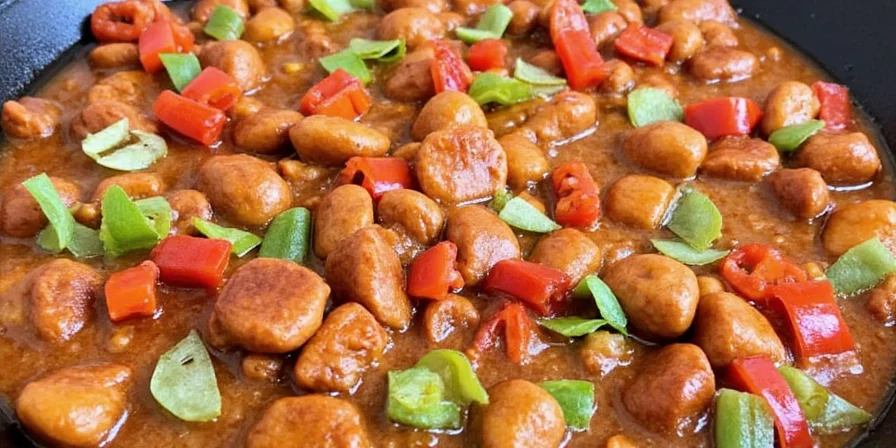
4. Potjiekos
- Origin: South Africa (Afrikaner tradition)
- Main Ingredients: Meat (often lamb or venison), vegetables, herbs, cooked slowly in a cast-iron pot over open flame
- Why It’s Special: Slow food before it was cool — a rustic, communal dish best enjoyed around a campfire.
- Spice Level: Earthy and aromatic, not overly spicy
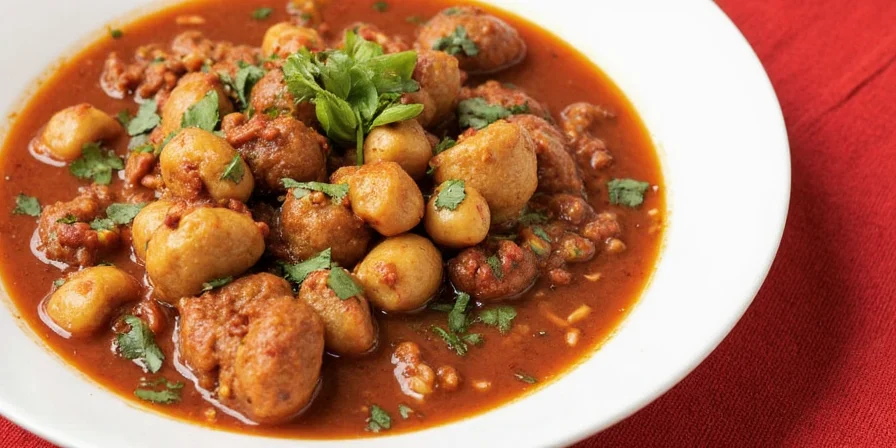
5. Chakalaka
- Origin: South Africa
- Main Ingredients: Spicy vegetable relish made with beans, tomatoes, peppers, cabbage, and spices
- Why It’s Special: The ultimate sidekick to pap (maize porridge) or grilled meat.
- Spice Level: Medium, with a tangy kick
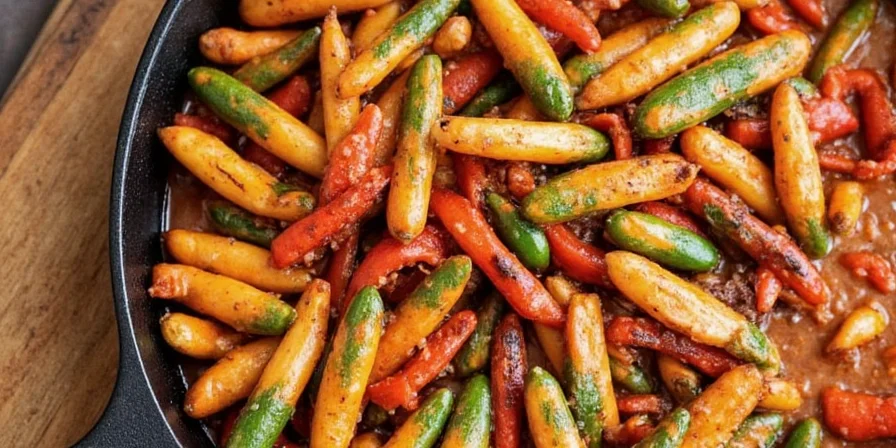
🧂 Spice Tips & Tricks: How to Master Southern African Flavors at Home
Ready to bring these bold flavors into your kitchen? Here are some pro tips to level up your game without booking a flight to Cape Town.
- Toasting Whole Spices First = Game-Changer: Don’t skip this step. Dry toast coriander seeds, cumin, and fenugreek in a pan until fragrant. Then grind for maximum flavor impact.
- Mix Your Own Curry Powder: Commercial curry powders can be bland. Blend your own using coriander, turmeric, cumin, ginger, and a touch of chili for a custom kick.
- Use Ghee or Lard for Authentic Sear: Especially when making curries or fried sides like chakalaka. Fat = flavor!
- Lemon Juice Adds Balance: When things get too rich or heavy, a splash of lemon juice can brighten everything up — perfect for dishes like bobotie or bunny chow.
- Simmer Slowly for Depth: Letting dishes like potjiekos simmer for hours develops complex flavors. Patience pays off here.
- Experiment with Proteins: While beef and chicken are common, try local game meats if available — like ostrich, kudu, or springbok (if legal and accessible).
- Use Fresh Herbs: Cilantro, parsley, and even fresh thyme can add a zing that dried herbs just won’t deliver.
🌍 From Farm to Flame: The Cultural Roots of These Dishes
The flavors of southern African dishes aren’t random — they’re deeply rooted in history, migration, and survival. Many spices arrived through trade routes and colonial influence, while others were homegrown treasures passed down through generations.
For example, the famous bobotie has strong ties to Indonesian-Malay slaves brought to South Africa by the Dutch East India Company. Their culinary techniques mixed with local ingredients, creating something entirely new yet comforting.
Similarly, bunny chow comes from Indian laborers who came to work in the sugarcane fields of KwaZulu-Natal during British rule. Without proper plates, they hollowed out loaves of bread to serve their curries — a clever solution that became a cultural staple.
These stories show how food connects us — across oceans, languages, and time.
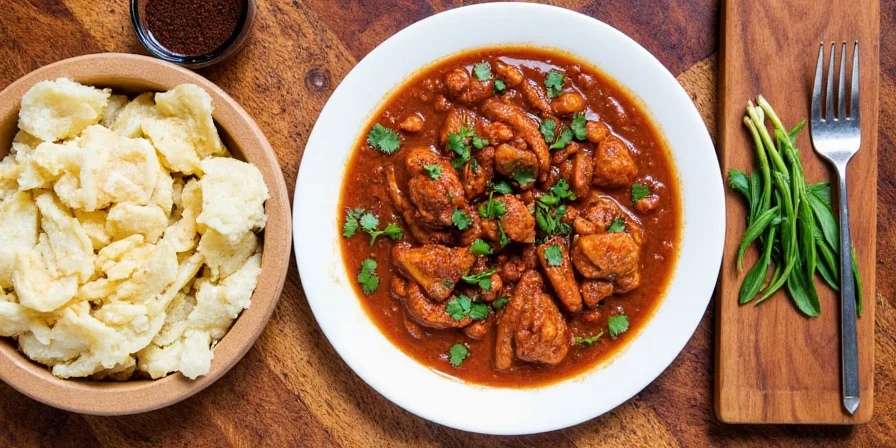
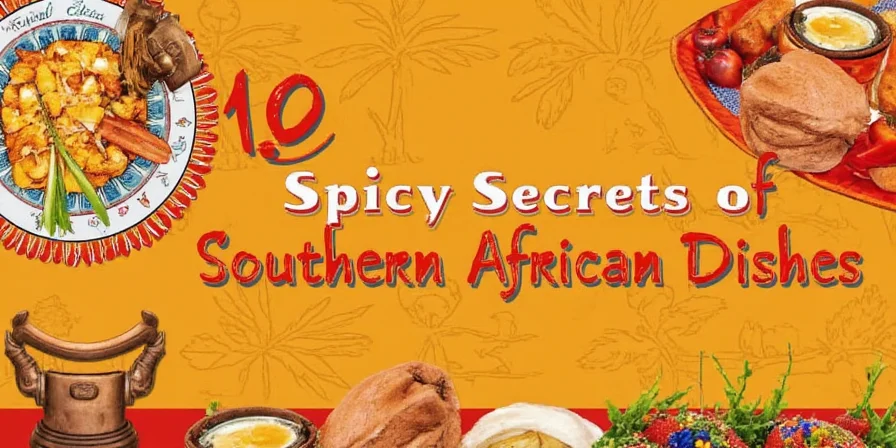
🍹 Drink & Dessert Pairings That’ll Make Your Taste Buds Dance
No meal is complete without the perfect pairing. Here are some beverage and dessert suggestions that harmonize beautifully with southern African flavors.
Drinks
- Rooibos Tea: Naturally caffeine-free, sweet, and earthy. Perfect with any spicy dish.
- Pinotage Wine: South Africa’s signature red wine — bold enough to stand up to rich stews and curries.
- Mampoer (Wild Apricot Brandy): A traditional spirit — only for the brave!
- Amasi (Fermented Milk): Thick and tangy — helps cool down the spice.
Desserts
- Malva Pudding: Warm sponge cake soaked in apricot brandy sauce. Serve with vanilla ice cream for contrast.
- Koeksisters: Twisted, syrup-soaked pastries — sweet and crunchy.
- Biltong & Droëwors: Dried meats — surprisingly satisfying after a spicy main course.
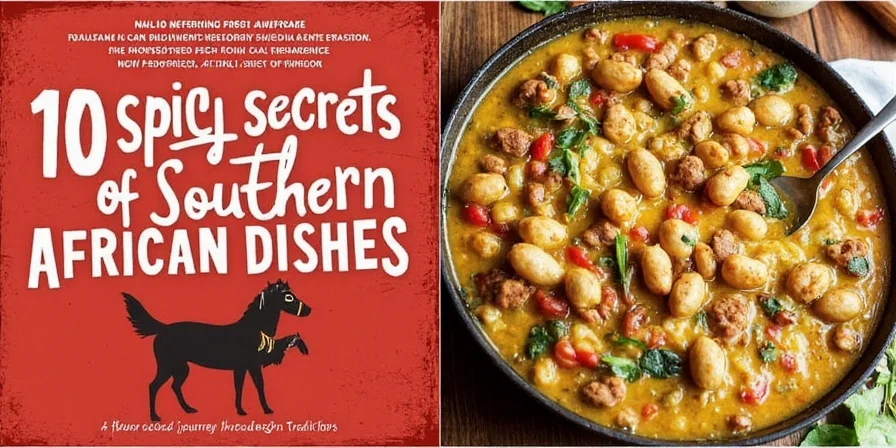
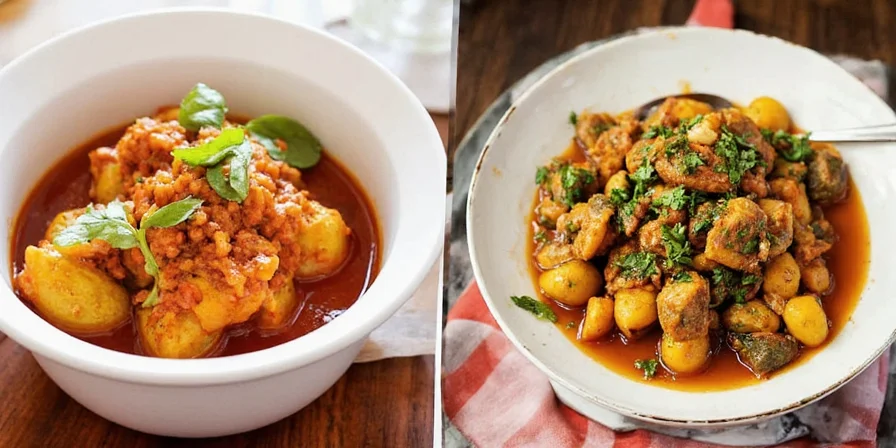
🏁 Summary & Final Thoughts
If there’s one takeaway from today’s spice-filled journey, it’s this: southern African cuisine is all about connection. Whether it’s the connection between people, place, and history — or between your tongue and that perfect bite of bunny chow — it’s an experience worth savoring.
- Embrace the spices — especially coriander, cumin, and curry powder.
- Cook with care — these dishes take time, but they reward you with unforgettable flavor.
- Pair wisely — balance heat with cooling drinks and desserts.
- Share generously — most southern African meals are meant to be shared with family and friends.
So next time you want to switch up your dinner routine, why not go global? Dust off those spices, grab a cast-iron pot, and let your kitchen become the heart of the savanna. 🌍🍴✨

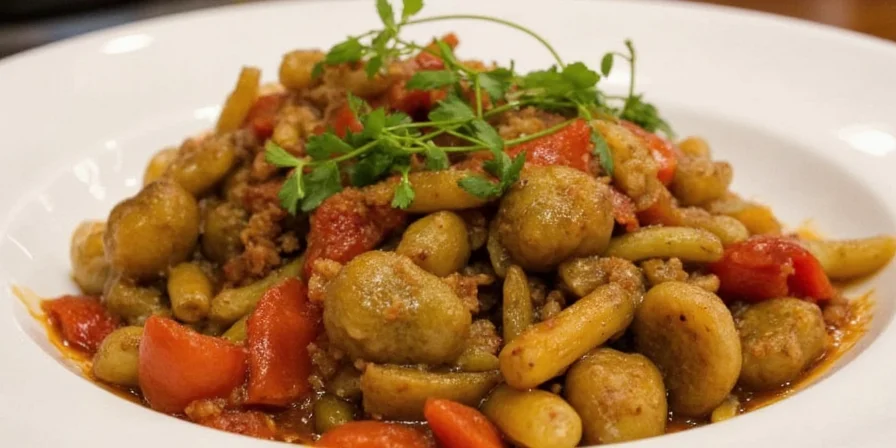









 浙公网安备
33010002000092号
浙公网安备
33010002000092号 浙B2-20120091-4
浙B2-20120091-4